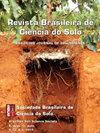副州免耕制度的采用:一个(再)观点
IF 2
4区 农林科学
Q3 SOIL SCIENCE
引用次数: 8
摘要
免耕系统(NTS)或“直接种植系统”(Sistema Plantio Direto)的概念是在巴西从免耕(NT)或“直接种植”(Plantio Direto)的演变中建立起来的,考虑到土壤的气候条件和促进化学、物理和生物改良的需要。“Plantio Direto”是一种环保实践,而“Sistema Plantio Direto”则是一种基于同时采取最小土壤干扰、维持永久土壤覆盖和作物轮作的农业生产系统。本研究回顾了巴西文献中“种植地”和“种植地系统”的概念,并在帕拉南本文章由计算机程序翻译,如有差异,请以英文原文为准。
Adoption of the no-tillage system in Paraná State: A (re)view
The concept of a no-tillage system (NTS), or “Sistema Plantio Direto,” was established in Brazil from the evolution of no-tillage (NT) or “Plantio Direto,” given the edaphoclimatic conditions and the need to promote chemical, physical and biological improvements in cultivated soils. While “Plantio Direto” is a conservationist practice, “Sistema Plantio Direto” presents itself as an agricultural production system based on the simultaneous adoption of minimum soil disturbance, maintenance of permanent soil cover and crop rotation. This study reviews the concepts of “Plantio Direto” and “Sistema Plantio Direto” in the Brazilian literature and uses two case studies in Paraná State to demonstrate the practical implications of these concepts. These two terms and their variations are recurrent themes in Brazilian scientific research and the professional environment, and may occur erroneously, hindering their adoption, results and implications. Regarding the “Sistema Plantio Direto,” we highlight the need to clarify the concepts of its basic practices to parameterize and characterize this process. The definition of crop rotation, for example, requires limits on the number of species along a given time scale, thus enabling their identification. Regarding the case studies, most grain crops conducted in Paraná State did not adopt the “Sistema Plantio Direto,” mainly neglecting the component of crop rotation. Nevertheless, the use of the “no-tillage system participatory quality index” (PQI) tool can contribute to the assessment and monitoring of the quality of the “Sistema Plantio Direto.” However, it requires adjustments to differentiate the “Sistema Plantio Direto” from the “Plantio Direto.”
求助全文
通过发布文献求助,成功后即可免费获取论文全文。
去求助
来源期刊

Revista Brasileira De Ciencia Do Solo
农林科学-土壤科学
CiteScore
3.00
自引率
11.80%
发文量
32
审稿时长
9-24 weeks
期刊介绍:
The Revista Brasileira de Ciência do Solo is a scientific journal published by the Brazilian Society for Soil Science (SBCS), founded in 1947, and is responsible for the propagation of original and inedited technical-scientific work of interest for Soil Science.
Contributions must not have been previously published or submit to other periodicals, with the only exception of articles presented in summarized form at professional meetings. Literature reviews are accepted when solicited by the Editorial Board.
 求助内容:
求助内容: 应助结果提醒方式:
应助结果提醒方式:


